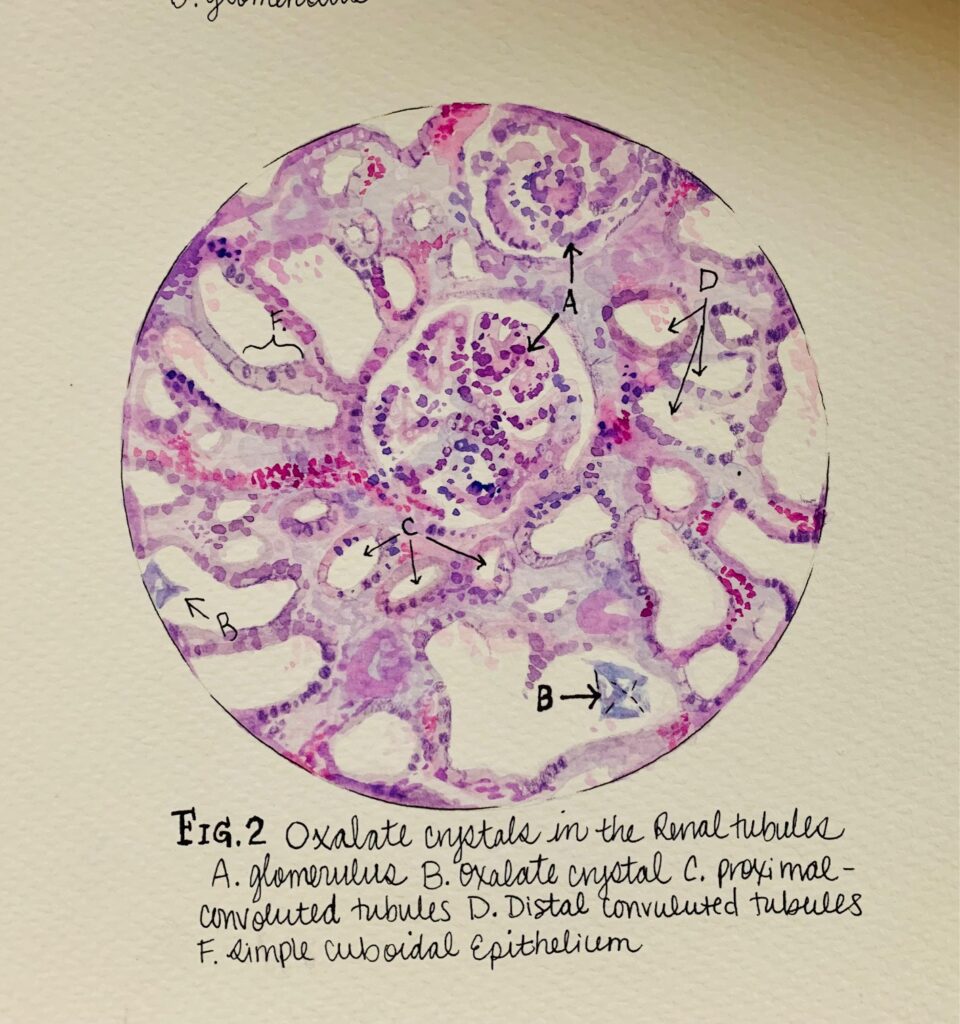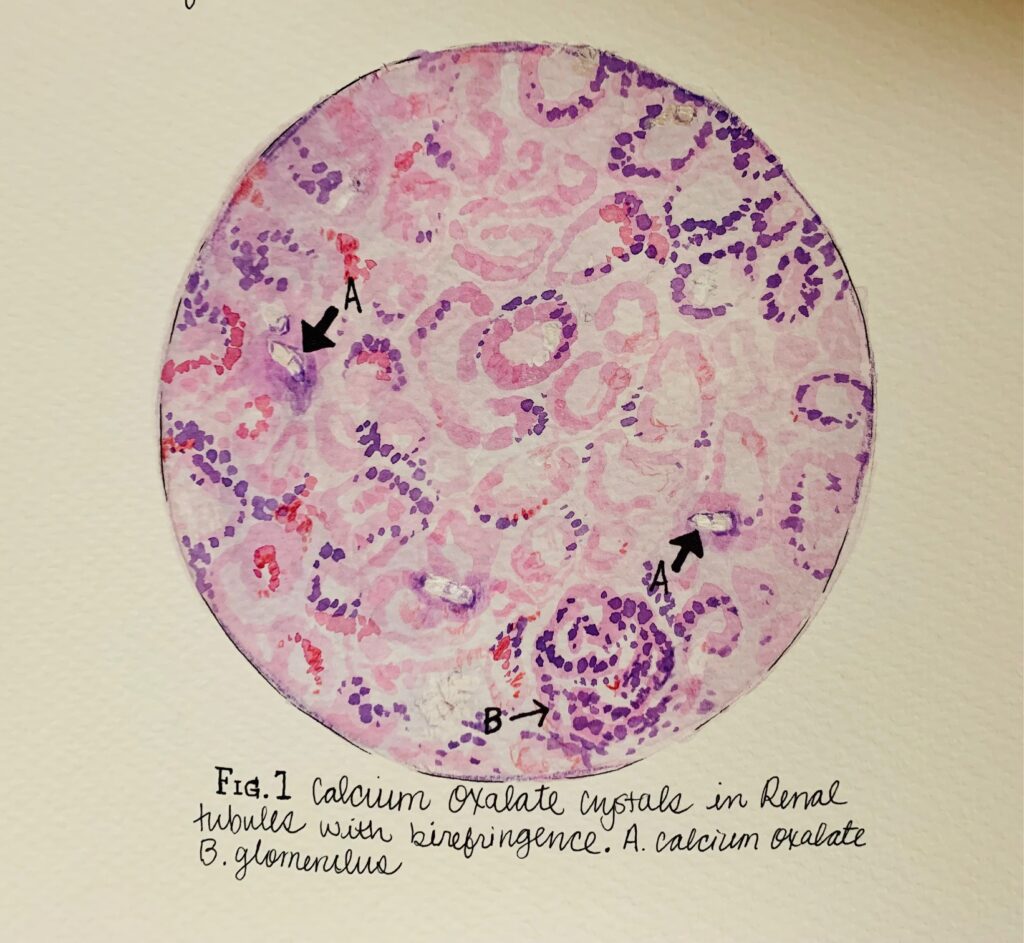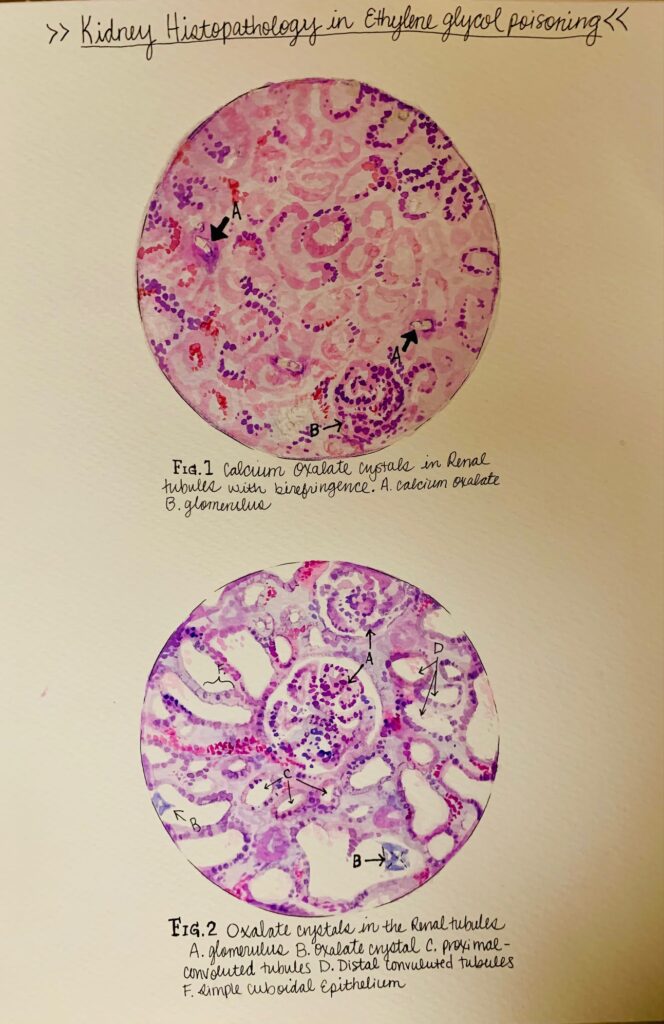It’s well known that pathology plays a critical role in the diagnosis of disease, identifying abnormal processes at a cellular level. Histopathology also has applications in forensics, helping to determine if cause of death is potentially unnatural and intentional. For my STEAM project I’m highlighting the identification of calcium oxalate crystals in the renal tubules as a indicator of ethylene glycol poisoning. I’m a little bit of a boring person, one of my hobbies involves collecting antique medical textbook, I wanted my project to emulate the charming hand drawn diagrams within these texts.




Histopathology is the study and examination of microscopic tissue to diagnose disease. When you receive a biopsy, the collected tissue is sent to pathology where a specialized doctor examines the sample under a microscope to decide if any abnormal disease processes are occurring. Ethylene glycol, or anti-freeze, has been used as poison due to its ease of access and tasteless nature. Symptoms of ethylene glycol poisoning are nausea, vomiting, convulsions, and coma followed by acute tubular necrosis and heart failure. When it is metabolized by the body it produces oxalic acid which decreases pH. This leads to severe metabolic acidosis and renal failure.
Current methods to determine if someone has died from ethylene glycol are gas chromatography and microscopic examination of renal tissue. Someone who has digested a lethal dose (100mL) is likely to have microscopic calcium oxalate crystals in the kidneys when examined and it will also likely show up in urine since it is processed through the kidneys. The dihydrate version of calcium is a normal finding in urine but the monohydrate variation is much less common and more diagnostic of ethylene glycol poisoning. These crystals can be seen upon normal staining but can be better visualized and categorized under polarized light. The pathologist must verify that the victim does not have a preexisting condition that could cause similar morphology on the slide upon slide review.
There are two different microscopic depictions of calcium oxalate crystals found in the renal tubules that Cayley hand painted. She drew on inspiration from the hand drawn illustrations found in antique medical textbooks.